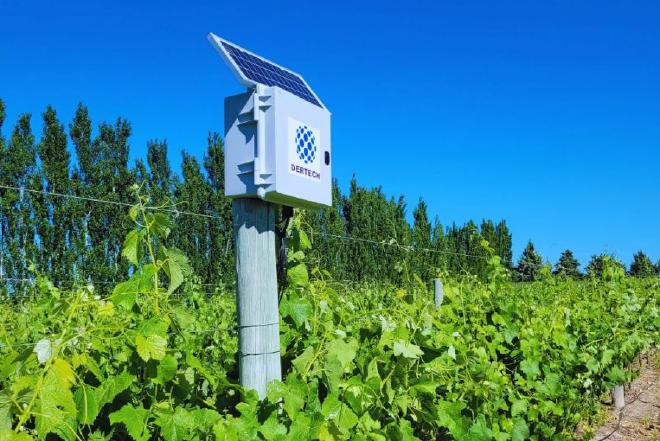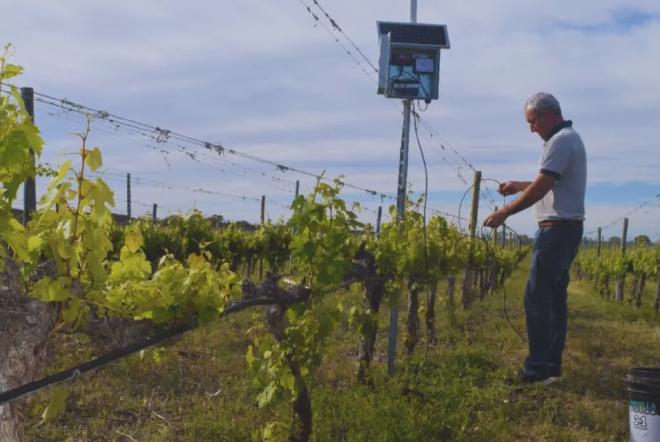

In the middle Colorado River basin, available water is limited, and its use is increasingly influenced primarily by climate variability. Given this scenario, the development of tools that allow for efficient monitoring, planning, and adjustment of irrigation becomes a key strategy for sustaining productive systems over time.
In the field, moisture probes installed at different soil depths provide continuous data on water availability. “These tools allow us to more precisely determine when to irrigate and avoid losses due to overwatering or unnecessary irrigation, which is key in soils with low storage capacity and high evaporation,” said Dardo Roy Fontanella, a researcher at INTA.
To improve the measurement of applied water, flow meters are used in irrigation systems and limnigraphs in distribution canals. In addition, automatic rain gauges and weather stations provide the data needed to calculate the crop’s water balance and estimate its evapotranspiration. “The integration of these variables allows irrigation to be adjusted to the actual demand of the crop, which translates into more efficient use of the resource,” Aumassanne said.

At the same time, work is being done to improve the performance of pressurized irrigation equipment. In this regard, Fontanella emphasized that “reducing pressure in center pivot systems reduces energy consumption, reduces evaporation losses, and increases application uniformity.” So, selecting appropriate emitters and properly calibrating the system are recommended practices.
The work approach combines technological tools with technical knowledge tailored to the region. “These strategies not only improve production efficiency but also allow for better planning of the agricultural cycle, especially in contexts of high climate variability,” Aumassanne said.
In addition to working with producers, INTA’s 25 de Mayo Regional Environmental Research Institute (AER) carries out research and outreach projects with institutions such as the National Water Institute (INA), the National Commission for Space Activities (CONAE), the National University of Comahue, and the National University of La Pampa (UNLPam), strengthening the link between science, technology, and the territory.
- The article Herramientas para optimizar el riego en regiones áridas was published in INTA Informa website.
Contact [Notaspampeanas](mailto: notaspampeanas@gmail.com)

